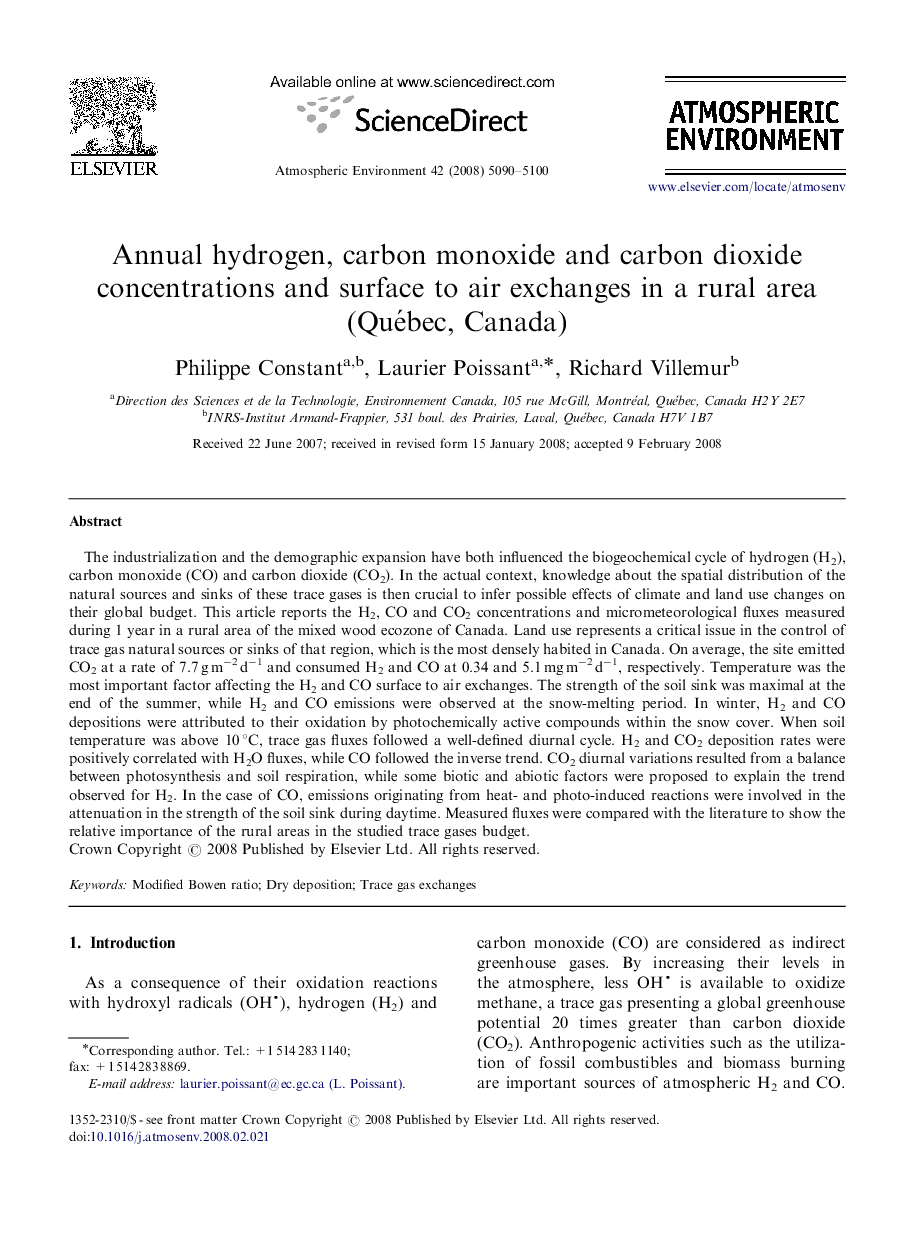| Article ID | Journal | Published Year | Pages | File Type |
|---|---|---|---|---|
| 4442266 | Atmospheric Environment | 2008 | 11 Pages |
The industrialization and the demographic expansion have both influenced the biogeochemical cycle of hydrogen (H2), carbon monoxide (CO) and carbon dioxide (CO2). In the actual context, knowledge about the spatial distribution of the natural sources and sinks of these trace gases is then crucial to infer possible effects of climate and land use changes on their global budget. This article reports the H2, CO and CO2 concentrations and micrometeorological fluxes measured during 1 year in a rural area of the mixed wood ecozone of Canada. Land use represents a critical issue in the control of trace gas natural sources or sinks of that region, which is the most densely habited in Canada. On average, the site emitted CO2 at a rate of 7.7 g m−2 d−1 and consumed H2 and CO at 0.34 and 5.1 mg m−2 d−1, respectively. Temperature was the most important factor affecting the H2 and CO surface to air exchanges. The strength of the soil sink was maximal at the end of the summer, while H2 and CO emissions were observed at the snow-melting period. In winter, H2 and CO depositions were attributed to their oxidation by photochemically active compounds within the snow cover. When soil temperature was above 10 °C, trace gas fluxes followed a well-defined diurnal cycle. H2 and CO2 deposition rates were positively correlated with H2O fluxes, while CO followed the inverse trend. CO2 diurnal variations resulted from a balance between photosynthesis and soil respiration, while some biotic and abiotic factors were proposed to explain the trend observed for H2. In the case of CO, emissions originating from heat- and photo-induced reactions were involved in the attenuation in the strength of the soil sink during daytime. Measured fluxes were compared with the literature to show the relative importance of the rural areas in the studied trace gases budget.
